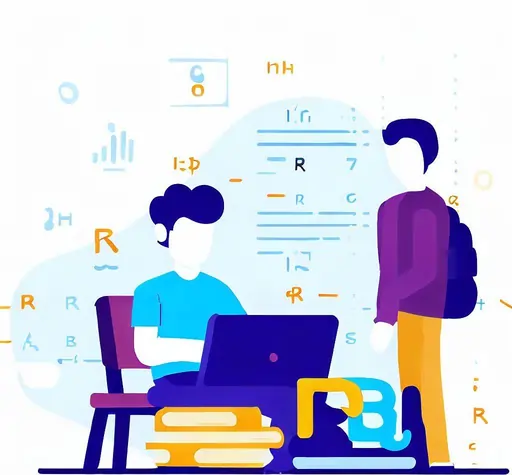Crafting Meaningful Assessments: An In-depth Look at the 8 Critical Qualities of Authentic R Modeling Assignments


- Pertinence:
- Rigor:
- Reliability:
- Clarity:
- Remarks:
- Originality:
- Introspection:
- Commitment:
First and foremost, every assignment must be relevant, but this is especially true for one as applied as data science. Students' motivation to learn rises dramatically when they can clearly connect their assignments to situations in real life. R modeling assignments should concentrate on scenarios that reflect real-world business or research circumstances. Students can relate to the assignment better when using real datasets from different fields, such as economics, medicine, or climatology. Additionally, it teaches them how to use statistical modeling in R to resolve practical issues.
Including case studies that require students to create models using real datasets is a good practice. For example, you could ask them to identify diseases by studying patient records or forecast future climate patterns using historical weather data. The assignments become more engaging thanks to this method, which also gives students the practical skills they'll need for future employment.
Another crucial component of a genuine R modeling assignment is rigor. The difficulty of the assignments should be in line with the students' skill levels and the learning goals of the course. The task should be difficult enough to pique students' intellectual interest, but not insurmountably so. The assignment will effectively test and improve students' understanding of R modeling if there is a healthy amount of rigor.
You could create a multi-part assignment with progressively more difficult parts for each to maintain rigor. Students might be required to complete simple data cleaning and manipulation tasks in the first section, for instance. Then, in the sections that follow, more difficult tasks might be covered, like developing models and doing exploratory data analysis. With the aid of this structure, students will be able to develop their knowledge and abilities gradually while still feeling like they are making progress.
Meaningful R modeling assignments are distinguished by authenticity. By "authenticity," we mean how closely a given assignment corresponds to the duties and difficulties that a data scientist would encounter in the real world. Real-world assignments help students develop crucial abilities like critical thinking, problem-solving, and effective communication in addition to testing their ability to apply theoretical ideas.
By including exercises that are modeled after actual data science projects, authenticity can be improved. For instance, you could ask students to define a problem, then analyze data, build a model, validate it, and finally communicate their findings in a clear and concise manner rather than just asking them to build a model. This comprehensive approach enables students to comprehend the entire data science workflow and gets them ready for the difficulties they will encounter in the workplace.
A good R modeling assignment should have precise goals, guidelines, and evaluation standards. Students benefit from clarity in terms of expectations and evaluation criteria. Additionally, it lessens confusion and anxiety, improving performance and creating a more enjoyable learning environment.
You should make sure to make the assignment's goals, tasks, and evaluation standards crystal clear in the assignment brief. The goals should be in line with the learning outcomes of the course. Each task should have clear instructions and be divided into manageable pieces. The evaluation criteria should outline how each task will be assessed and how much each component will count toward the final grade. Additionally, showing students examples of excellent work can aid in their understanding of the standards that must be met.
A crucial component of the learning process is feedback. It aids students in recognizing their assets and weaknesses and offers pointers on how to advance. Feedback can be given during various stages of a R modeling assignment, such as data analysis, model building, and interpretation.
You could make use of a variety of tools and techniques to give effective feedback. You could, for instance, use automated grading tools that offer immediate feedback on students' coding. Peer review is another option, in which students assess one another's work. This approach encourages peer learning while also lessening your workload when it comes to grading. Additionally, you could give each student personalized feedback that focuses on both their areas of strength and their areas for development. Although this method takes time, it can greatly improve students' learning.
Students' interest and engagement can be piqued by encouraging creativity in their R modeling assignments. The freedom to try out various methods and approaches should be provided to students rather than forcing them to adhere to a strict workflow. This improves their ability to solve problems and aids in the development of a deeper understanding of the subject.
You could create open-ended assignments with more than one possible solution to encourage creativity. You could, for instance, assign students the task of looking over a dataset and coming up with their own research questions. They could then create models to address these inquiries, present their findings, and move on. This method promotes critical thinking, creativity, and ownership of learning in the students.
Reflection is an effective tool for learning. It aids students in understanding their learning process, making sense of their experiences, and pinpointing areas for development. Asking students to record their work process and write a reflective report on their learning can help to facilitate reflection in the context of R modeling assignments.
You could ask students to keep a logbook where they record their work process, decisions, difficulties, and insights in order to encourage reflection. This method encourages students to reflect carefully on their work and take lessons from their mistakes. You might also ask students to write reflective reports at the end of the assignment where they explain what they learned, how they improved, and what they would do differently in subsequent assignments. Self-improvement, lifelong learning, and self-awareness are all supported by this reflective practice.
Finally, students should be involved in an effective R modeling assignment. The level of active participation that students have in the learning process is referred to as engagement. Students who are more engaged are more likely to be motivated, to work harder, and to produce better learning outcomes.
There are several strategies to increase student interest in R modeling assignments. Use of fascinating datasets that are pertinent to students' interests or current affairs is one approach. A different approach is to include interactive components, like data visualization exercises or engaging R Shiny apps. Utilizing group projects where students work in teams and benefit from one another is yet another strategy. These techniques not only make the assignments more interesting, but they also make learning more enjoyable and fun.
Conclusion:
Making meaningful assessments for R modeling is crucial for fostering a thorough understanding of the material and preparing students for problems with real-world data. Educators can create assessments that are in line with the objectives of data science education by incorporating the eight critical characteristics covered in this blog.
Genuine R modeling assignments should, above all, be based on real-world problems and scenarios. Students can comprehend the real-world applications of their skills and find a purpose in their learning by contextualizing the assignments.
Assessments should also promote problem-solving and critical thinking. Students should be pushed to analyze complex data, spot patterns, and come up with creative solutions rather than just being judged on their technical proficiency. This develops their capacity for critical thought and multi-faceted problem solving.
Furthermore, genuine evaluations ought to encourage teamwork and communication. Teamwork and clear communication are essential for successful data science projects in the real world. Along with their technical skills, students also develop these crucial skills by participating in group projects or presentations.
Assessments should also encourage innovation and experimentation. Students should be encouraged to experiment with various methods, test hypotheses, and modify their models as necessary because data modeling is not a linear process.
Teachers can create a rich learning environment that prepares students for the dynamic field of data science by incorporating these characteristics into R modeling assignments. Students can then gain a thorough understanding of R programming, improve their ability to solve problems, and gain confidence in using their knowledge in practical situations.
Finally, developing meaningful assessments in R modeling requires moving beyond memorization and concentrating on genuine, real-world problems. Educators can design assessments that encourage critical thinking, problem-solving, creativity, collaboration, and communication skills by incorporating the eight critical qualities mentioned. Students can excel in the field of data science and make significant contributions to the industry by developing these skills.